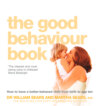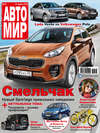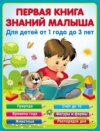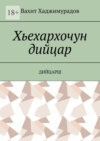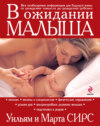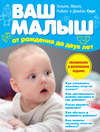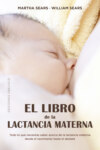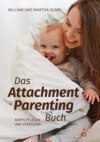Читать книгу: «The Good Behaviour Book», страница 10
building better-behaved brains
The developing brain of an infant resembles miles of tangled electrical wire called neurons. At the end of each neuron tiny filaments branch out to make connections with other neurons, forming pathways. This is one of the ways the brain develops patterns of association: habits, and ways of acting and thinking; in other words organization. Attachment parenting creates a behavioural equilibrium in a child that not only organizes a child’s physiology but her psychological development as well. In a nutshell, attachment parenting helps the developing brain make the right connections.
The unconnected child, however, is at risk for developing disorganized neurological pathways, especially if that infant has come wired with even more than her average share of disorganized pathways. This child is at risk of developing behavioural problems later on, namely hyperactivity, distractibility, and impulsivity – features of one of the most increasingly prevalent “diseases” in childhood and now adulthood – attention deficit/hyperactivity disorder (ADHD). A person’s brain grows more in the first three years than anytime in life. Could the level of nurturing during those formative years affect the way the behavioural pathways in the brain become organized? We believe it does, and we also believe that research will soon confirm that many later child and adult behavioural problems are really preventable diseases of early disorganization. (See related topic, “Disciplining the Hyperactive Child”.)
Attachment parenting encourages obedience. The real payoff of attachment parenting is obedience. This style of parenting, besides opening up parents to the needs of their baby, also opens up the baby to the wishes of the parent. The universal complaint of parents is “My child won’t obey”. How compliant your child is depends upon his temperament, which you can’t control, and the depth of your parent-child connection, which you can influence. Because your minds mesh, the connected child is more open to accept your perspective and switch from his mind-set to yours, to listen to you instead of being closed to you. The connected child trusts that parents know best.The attached child wants to please.
Even the iron-willed child bends to the will of the mother or father who operate on the parenting principle “The stronger my child’s will, the stronger must be my connection.” It is this connection that gives parents confidence. Wanting to please and trying to obey are the behavioural trademarks of the connected child. Jenny, the mother of a high-need baby, who is now a strong-willed four-year-old volunteered: “Initially attachment parenting took more energy and was less convenient. Now caring for Jonathan is easier because discipline flows naturally between us. I’m finally beginning to cash in on my investment.”
For more benefits of attachment parenting and discipline, see: Chapter 3, “Understanding Ones, Twos, and Threes”; Chapter 7, “Self-Esteem: The Foundation of Good Behaviour”; Chapter 8, “Helping Your Child Express Feelings”; and the special feature “Inner Peace”.
* We discuss each of these attachment tips in greater detail in The Baby Rook (Thorsons, 2005). We treat them here in briefer form to show how they lay the foundation for discipline.
chapter 3 understanding ones, twos, and threes
Hold on to your hat – the fun begins. Babies turn into toddlers, and their new skills add challenges to being a parent. As a child’s physical and mental world grows, parents begin to think about how to shape his behaviour to help him learn, yet keep him out of trouble.
This is an important learning period for parents as well. To understand how to discipline a toddler, it’s helpful first to understand toddlers and their behaviour. Let’s get into the mind and behind the eyes of the typical toddler to learn why this fascinating little person is so challenging.
how toddlers act – and why
At each stage developmental skills dictate behaviour. To cope with toddler behaviour it helps to remember the basic principle of development discipline: The drives that babies have in order to develop are the same ones that create discipline challenges. Babies need a strong desire to explore so they can learn, yet these ventures can lead them into uncharted territory. By understanding what skills click in when, you can be prepared for the actions that result and channel them into positive behaviours. From one to two years of age a baby gets a lot of what he needs to be more independent – “wheels” to roll on and a “horn” to blow. With these tools he feels ready to travel the roads of the world – or at least the immediate neighbourhood. Here are the changes you can expect.
Wheels to run on. Imagine how it must feel to learn to walk! Baby can see all those tempting delights around the room, and he finds ways to get his hands on many of them. Once the developmental skill of walking appears, children have an intense drive to master it. So toddlers toddle – constantly. And they can toddle into unsafe situations. Walking progresses to running, and climbing a few stairs turns into scaling kitchen counters.
growing out of it
How often have you heard, “Oh, just wait, he’ll grow out of it”? Though partially true, this lame excuse for not bothering to correct certain behaviours shows an incomplete understanding of child development. Growth and development used to be pictured like clothing sizes. The child outgrows an outfit, discards it, and puts on a bigger one that fits better. In reality, it’s not that simple. Children don’t always discard behaviours from one stage of development when they grow into another. Misbehaviour that is not corrected at one stage may linger into the next. On the other hand, don’t get too excited or worried when you see “good” or “bad” behaviour in your children. It may be a one-off thing that children try on for size and quickly discard when it doesn’t fit.
A child’s behavioural development is like a lift through a department store. The doors open and two children get off to find what they need on each floor. One child gets no sales help. He explores freely, puts on a bunch of new clothes, and gets back into the lift to go to the next floor. When he gets there he realizes that he still has the old clothes on underneath, and his new ones don’t fit that well. But he keeps going up on his own, putting new clothes over the old ones, carrying more and more excess baggage to each new floor. Soon he is weighed down with layers of clothing that he should have discarded earlier. Eventually, there is less and less room for new stuff.
The other little shopper gets the help of a wise and experienced disciplinarian. She has seen many children get out of that lift and knows just what he needs. “Let me help you try on some new clothes”, she offers, adding, “but we’ll have to figure out what to do with your old clothes. Some seem to fit you just fine, so we’ll keep them. They’ll be useful to you later. Let’s get rid of the ones that aren’t nice to make room for the ones that fit you better.” The disciplined child goes to each new floor not only with better clothes that fit but without excess baggage slowing his progress.
Which behaviours will children outgrow on their own and which need your attention? Behaviour that is linked to specific needs, tasks, or limitations of a certain developmental stage are probably best left alone; for example, thumb-sucking in a toddler, negativism in a two-year-old, shyness with strangers in a four- or five-year-old. Behaviour that may be understandable at a certain age but is nevertheless obnoxious should be worked on; for example, throwing food from the high chair, teasing the family dog, aggression toward parents. Children need limits that help them grow up to be polite, thoughtful, and caring. Your job as parents is to arm your children with the self-control tools that will help them make the transition from one developmental stage to the next.
Hands as tools. Along with learning how to get things, the year-old baby develops hand skills to manipulate what he gets. Doors are to be opened, taps turned, drawers pulled, dangling cords yanked, and waste cans emptied. Everything within walking and grabbing distance is fair game, or so he figures. To the inquisitive adventurer, the whole house is an unexplored continent, and he intends to leave no stone unturned.
Out of the mouths of babes. The development of language – verbal and body – makes parenting a bit easier. Baby can now begin to tell you what she needs with words. This new skill is a mixed blessing. While baby words are entertaining, they can also be frustrating as the parents struggle to understand just what “da-boo” means. Toddlers like to try on different noises to hear how they sound and how they affect their audience. They screech and squeal, yell and jabber. Sometimes their little baby words are pleasing to your ears, at other times they are nerve–wracking. Language also gives expression to feelings; a feisty “No” from your formerly agreeable child can raise your eyebrows.
Бесплатный фрагмент закончился.
Начислим
+31
Покупайте книги и получайте бонусы в Литрес, Читай-городе и Буквоеде.
Участвовать в бонусной программе
